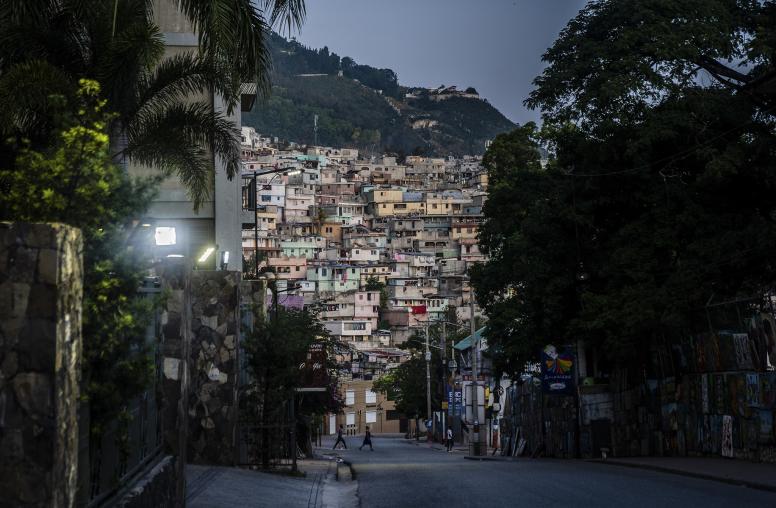The tragedy of the “disappeared” in Colombia’s more than half-century of internal war cuts across the entire society. Among those who were forcibly seized and then vanished without further information are labor leaders and journalists, peasant organizers and politicians, urban and rural citizens. Soldiers and guerrillas are missing, too. The perpetrators include right-wing paramilitaries, leftist rebels and government security forces. In few other conflicts has the tactic of disappearance been so pervasive or persistent over so many years.

Due to the sustained advocacy of victims, resolving the open wound of disappearances became critical to peacemaking efforts between the government and the Revolutionary Armed Forces of Colombia (FARC-EP) during their negotiations in Havana. On Oct. 17, they reached an agreement on disappearances, with each side making a range of commitments such as providing information on those who vanished and searching for their remains.
“No one knows exactly how many people vanished.”
How well is this delicate deal working out? On April 22, 2016, USIP and the Latin America Working Group Education Fund, a coalition that helps activists inform U.S. policymakers, convened experts to take stock. Each of them stressed the importance of engagement with the victims’ families and called for numerous technical improvements in the efforts to resolve the bitter legacy of Colombia’s disappearances.
No one knows exactly how many people vanished in Colombia’s internal armed conflict, but the number is vast. The Colombian government’s Victims’ Unit registers more than 45,000 victims of forced disappearance. Another government database managed by the Institute for Forensic Medicine, SIRDEC, puts the number of Colombia’s missing at 111,588, with more than 22,000 of these classified as forced disappearances.
As implementation of the agreement moves forward, we, too, are certain that engaging victims in the design and execution of plans to account for the disappeared can boost confidence in the peace process among a skeptical public as talks in Havana enter the home stretch. Successful implementation will also help with putting any final accord into effect.
In the meantime, it’s critical to make continual assessments of shortcomings in the process, as our panelists did, so the gaps can be addressed. Here’s what they said:
- Ulianov Franco, representing both Familiares Colombia, an organization of family members of the disappeared, and the Working Group on Forced Disappearance, a group of associations of the families, human rights organizations, and technical experts, emphasized the importance of working with family members of the disappeared in all aspects of the search process. He urged more consistent coordination with each family for “dignified returns” of remains, something that government agencies often fail to do. While Colombia has strong legislation on forced disappearances, too often disappearance cases are rapidly closed, Franco said. Given the high levels of impunity for disappearances, he said that greater effort is required to achieve justice in these cases. Finally, he underscored the need to establish clearly the scope of disappearances in Colombia.
- Carlos Valdés, director of the National Institute of Forensic Medicine, described the “Plan Cementerio,” started in 2011 to identify unmarked graves within all of Colombia’s cemeteries and to preserve and identify remains. He discussed current efforts at the Institute to bring in experts, scholars, victims and human rights organizations to help them improve standards for the search, recovery and identification of the disappeared. He acknowledged past flaws in the Institute’s methods, as well as its lack of openness to victims, and described efforts to improve capacity and transparency. Valdés discussed new approaches to exhuming remains and carrying out dignified returns that consider ethnic and religious sensitivities. The agreement signed in October, he noted, means that the Colombian government will be increasing its efforts to locate the disappeared.
- Diana Arango, director of the independent forensic team Equitas, also presenting on behalf of the Working Group on Forced Disappearance, described the recommendations that the working group presented to the negotiating parties in Havana in March. Drawn from workshops with more than 300 participants in 24 departments of the country, the recommendations called for the parties in Havana to establish a clear mechanism so that victims could provide information for carrying out the immediate humanitarian measures agreed to at the peace talks. Arango emphasized the importance of creating a strong, independent, national search unit that would take an active role in locating the disappeared based on carefully designed search plans. She urged the parties in Havana to consult regularly with the Working Group on Forced Disappearance as they design the National Search Unit, and develop and implement the relevant law and regulations establishing the unit.
- Christoph Harnisch, the head of delegation of the International Committee of the Red Cross (ICRC) in Colombia, said (via Skype) that the ICRC has been charged with organizing the information it receives from the government, the FARC-EP, and civil society, and developing a work plan with the National Institute of Forensic Medicine. The ICRC is acting as a liaison between the parties and family members of the victims. He cautioned that the lack of transparency and clarity in addressing disappearances has led to political difficulties down the road in the post-conflict countries where the ICRC has worked. He noted furthermore that many family members of victims in Colombia are not yet speaking up as they are still afraid, and this needs to be understood and respected.
Virginia Bouvier is a senior advisor for peace processes at USIP and editor of Colombia: Building Peace in a Time of War; she blogs at “Colombia Calls” (vbouvier.wordpress.com). Lisa Haugaard is director of the Latin America Working Group Education Fund and co-author of Breaking the Silence: In Search of Colombia’s Disappeared.


